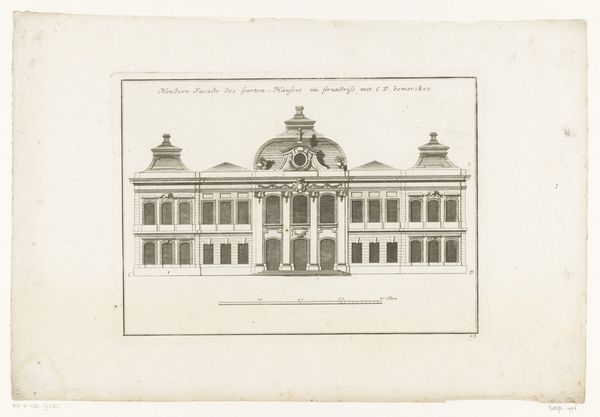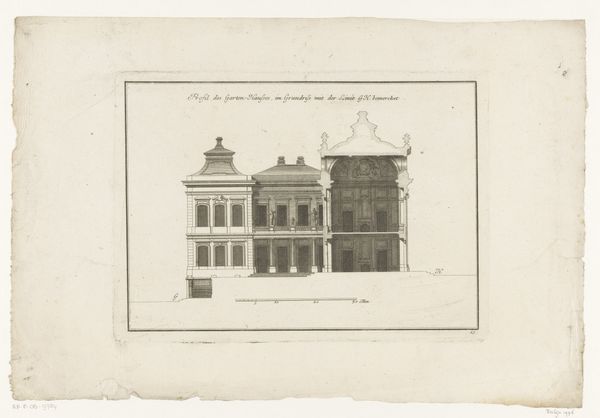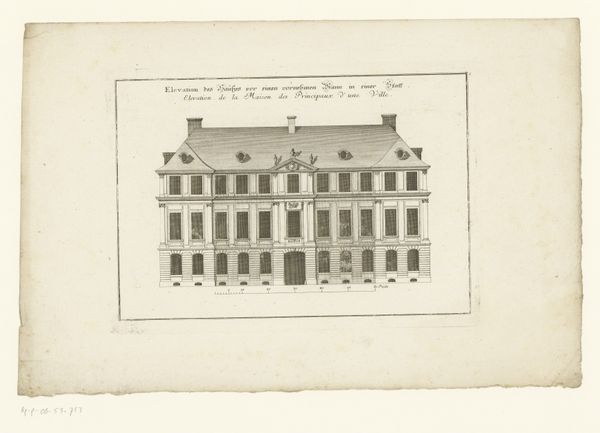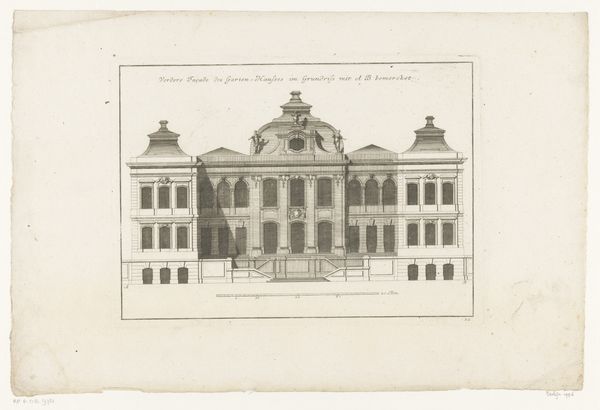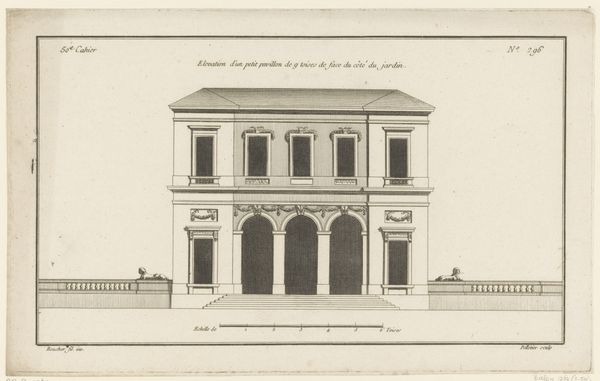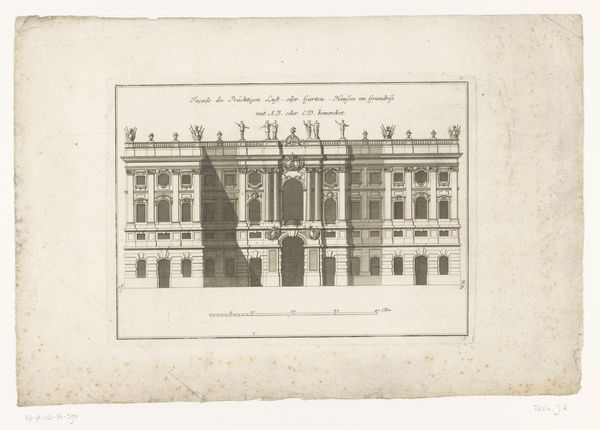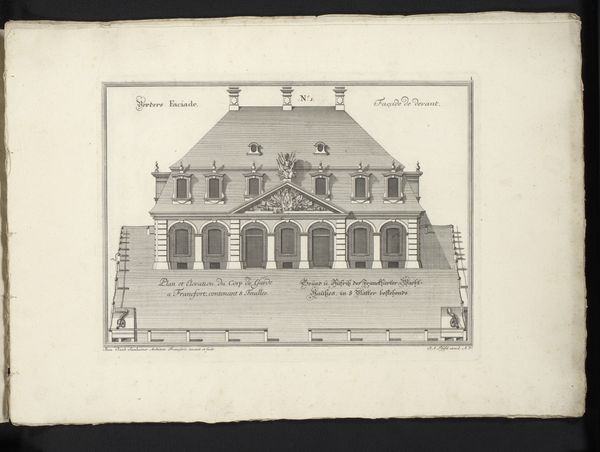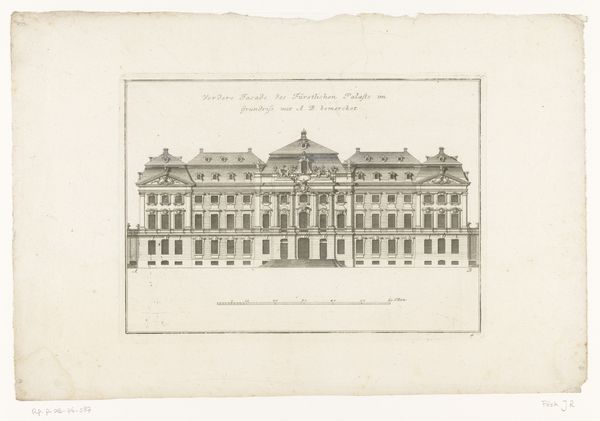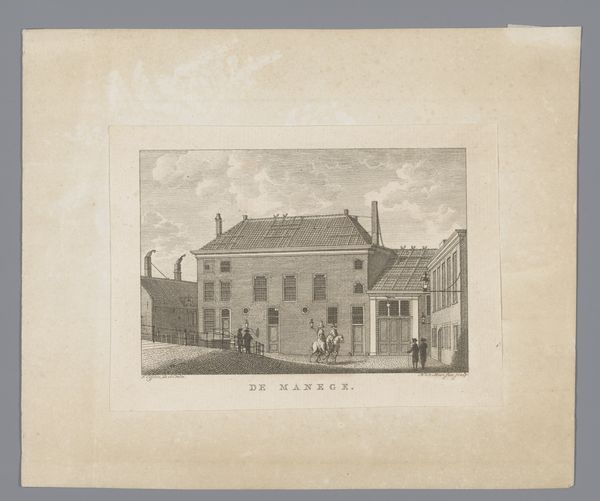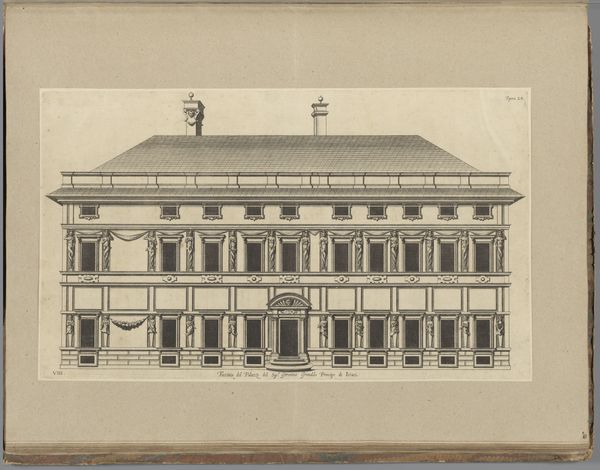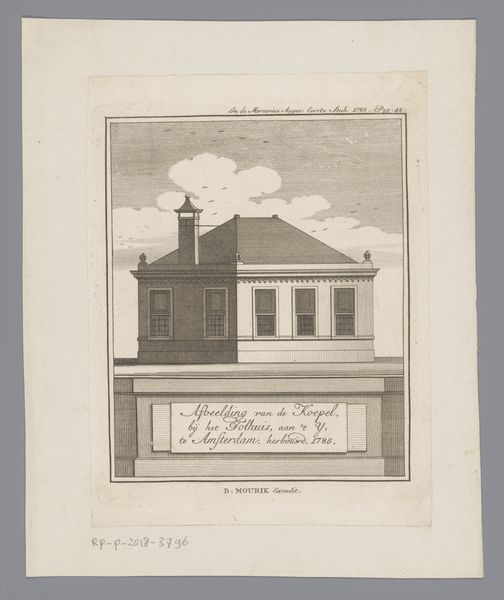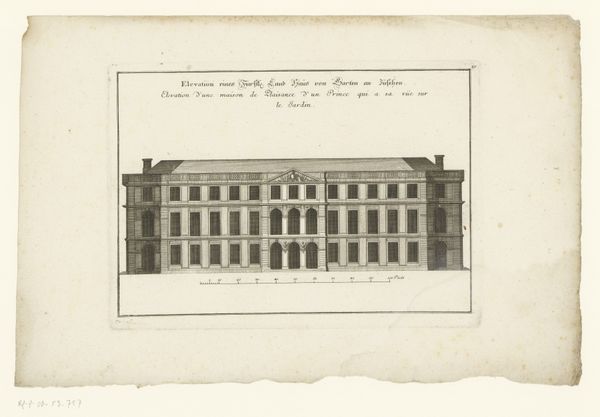
drawing, paper, engraving, architecture
#
drawing
#
baroque
#
old engraving style
#
paper
#
cityscape
#
engraving
#
architecture
#
building
Dimensions: height 218 mm, width 305 mm
Copyright: Rijks Museum: Open Domain
Curator: We’re looking at an engraving from 1729, "Zijfaçade van een tuinpaviljoen" – or "Side Facade of a Garden Pavilion"– by an anonymous artist. It’s rendered on paper, depicting an architectural structure. Editor: Stark. Stripped back to bare bones, wouldn't you say? The absolute minimum required to convey the pavilion’s structure. The lines are incredibly clean. Curator: Indeed. It's almost diagrammatic. Notice the architectural style--highly Baroque, speaking to power, order, and a very specific social aspiration of the era. These pavilions weren't just about beauty, but asserting a certain control over nature, wasn't it? A controlled perspective within nature. Editor: It's a fascinating contradiction. Nature tamed. What interests me most is the almost mathematical precision of the facade; the carefully balanced rhythms established by the windows and pillars, it hints at ideal, perhaps even utopian design principles. Curator: Utopian dreams were certainly a preoccupation. Garden pavilions such as these were also spaces of social interaction. A certain theatricality too, was part of the symbolism--the very facade becomes a stage. You could look at its placement as a status statement. Editor: Is the lack of ornamentation intentional, then, to emphasize the functionality? The absolute purpose of this 'stage' is left to interpretation. Is this meant for the landed gentry or royalty itself? Curator: Its function can be speculated based on the context of the age, yes, it carries cultural aspirations beyond its barest appearance. Though bare the pavilion looks, this building suggests what these gardens represented at the time. An era moving toward scientific discovery, reason... Editor: Ah, and the Enlightenment thinking perhaps influencing the artistic reductionism? Curator: Absolutely. The spirit of reason is what it evokes, I think. This is an interesting example of architecture captured in engraving. The artwork’s appeal is the visual narrative itself. Editor: Right, and it brings out our own reading into relief. Thank you!
Comments
No comments
Be the first to comment and join the conversation on the ultimate creative platform.
